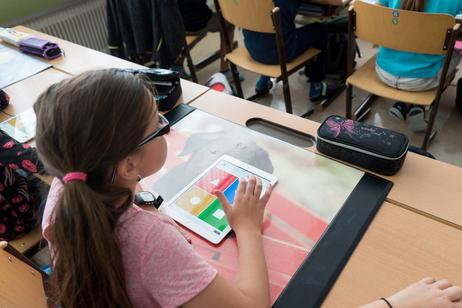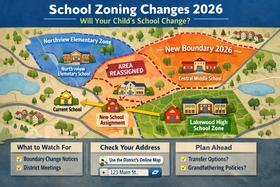In recent years, the technology investment in public schools, ranging from K-12 institutions, has grown astronomically. According to Equity Review research, in 1998 alone, “the level of spending on educational technology at the national level was estimated at over $5 billion,” and it has grown each year in the last decade.
While each school’s budget is diverse and unique, programs have been implemented to balance the rising costs of technology and education, aiming to provide all students with equitable access to a learning environment with modern and interactive equipment.
This illuminating article delves into the dynamic landscape of technology implementation and funding in public schools. We examine the various ways technology is being integrated into educational settings, ranging from interactive whiteboards and online learning platforms to coding programs and virtual reality experiences. We also explore the challenges and opportunities associated with funding technology initiatives, considering budget constraints, equity concerns, and the evolving needs of students and educators. By showcasing real-life examples and innovative approaches, we shed light on successful models and best practices that can inspire and guide schools in their technology adoption journey. Whether you're a parent, educator, or education enthusiast, join us as we uncover the transformative potential of technology in public schools and the strategies for securing sustainable funding to ensure equal access and enhanced learning experiences for all students.
Federal Funding in Public Schools
According to the “Resource Guide to Federal Funding for Technology in Public Schools,” a five-year, $2 billion dollar grant was established in 1998 to provide state and local support for meeting national technology goals. National goals for all public schools include: “modern computers, high-quality educational software, trained teachers, and affordable connections to the Internet.”
To further support the successful fruition of this goal, the “Technology Literacy Challenge Fund” was launched in 1997, with over $200 million dollars in funding—this later doubled to $425 million by 1998. The millions of dollars in funds were dispersed to all fifty states, where local communities and public schools were to collaborate to integrate technology into teaching and learning.
The National Education Association (NEA) and Tech Support
As NEA supports, “every student needs the ability to navigate through the 24/7 information flow that today connects the global community. For students to thrive in a world enabled by information technology, we must give them the skills to make sense of and use the information that engulfs them. They need to know how to learn new skills as quickly as technology creates new challenges.”
In order to provide students with access to the constantly evolving technologies, NEA is working to support the implementation of devices such as “laptops and pocket PCs, digital cameras and microscopes, Web-based video equipment, graphing calculators, and even weather-tracking devices.” By integrating these tools, NEA hopes to foster the opportunity for students to “become responsible and savvy users and purveyors of information. They need to need how to collaborate successfully across miles and cultures.”
Growing Programs in Public Schools
Laptop Programs
While funding is not realistically available to provide every student in public schools with a laptop, experimental programs have provided various schools across the country with access to “laptop programs,” where whole classes are provided with laptops so that teachers can experiment with the implementation of technology into their lessons and activities.
According to the Boston News, Maine is the first state in the nation to promote a state-wide technology plan that has provided every middle school student with a laptop—and they’re seeing incredible academic results, especially in students’ writing. The program, which was designed to eliminate the “digital divide” between wealthy and poor students, distributed more than 30,000 computers to each seventh and eighth-grade student in public schools in 2002 and 2003.
With the rising access to this technology, schools found that “despite creating a language all their own using e-mail and text messages, students are still learning standard English and their writing scores have improved on a standardized test since laptop computers were distributed.”
Other studies support that eighth graders’ standardized test scores, after the implementation of the laptops in Maine, actually improved. As one teacher explains, “Laptops make it easier for students to edit their copy and make changes without getting writer's cramp […] (and) those skills translated when the test was taken with pen and paper.” Ultimately, Maine Education Assessment scores show marked improvement, when only 29 percent of students were ranked as “proficient in writing,” while over 49 percent of eighth-graders soared to proficiency in 2005.
How to Promote a Laptop Program at Your Local School
While funding for schools’ technological opportunities, like the laptop program, is national, state, and locally driven, parents can be involved in the decision-making process by attending the public school board meetings, creating petitions for technology funds with community support, and by meeting with individual teachers to communicate potential plans for change.
While this particular avenue for change is often long and tedious, one public school’s parents took the initiative for providing laptops into their own hands—and pockets. According to the Digital Chalkie, one anonymous public school, with a population of only 120 students, had a group of parents who worked to provide students from grades 4-7 with laptops; to achieve this, parents collaborated with Apple to work on leases, financing options, and discounts for members of the community.
The parents, however, did not discount families who may be facing financial hardship; in this case, approximately 20% of families were provided with a laptop for student use during school hours only, allowing every child to have access to a computer without creating any form of financial or class divides. Ultimately, while parents had to collaborate with school leaders to implement this plan, one parent explains how the “staff, parents, kids and Principal understand and support what we are trying to do”—even though this particular school is not considered to be wealthy, and does not have excessive funding allowances.
Incorporating laptops and technology into the classroom can significantly improve the entire school’s reading and writing levels – not to mention their technical savvy. By working with your child’s school, or taking matters into your own hands, you can ensure that your children get the computer exposure they deserve.
Questions? Contact us on Facebook @publicschoolreview










